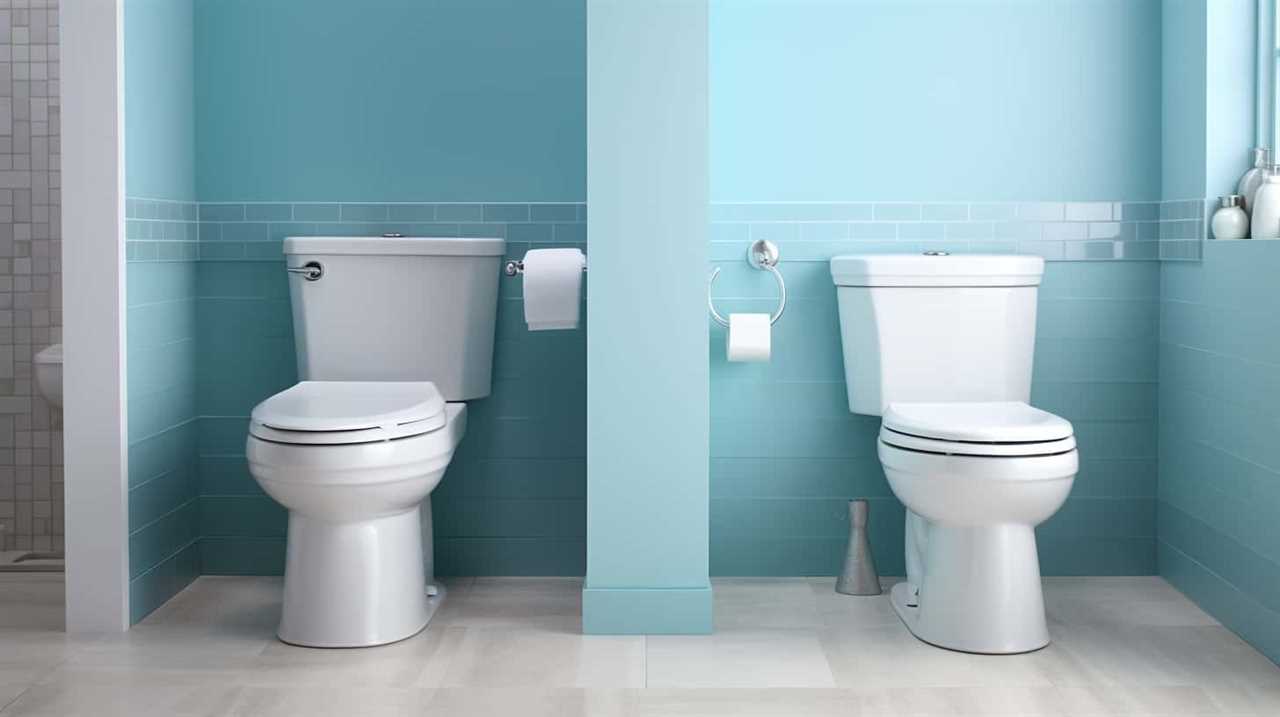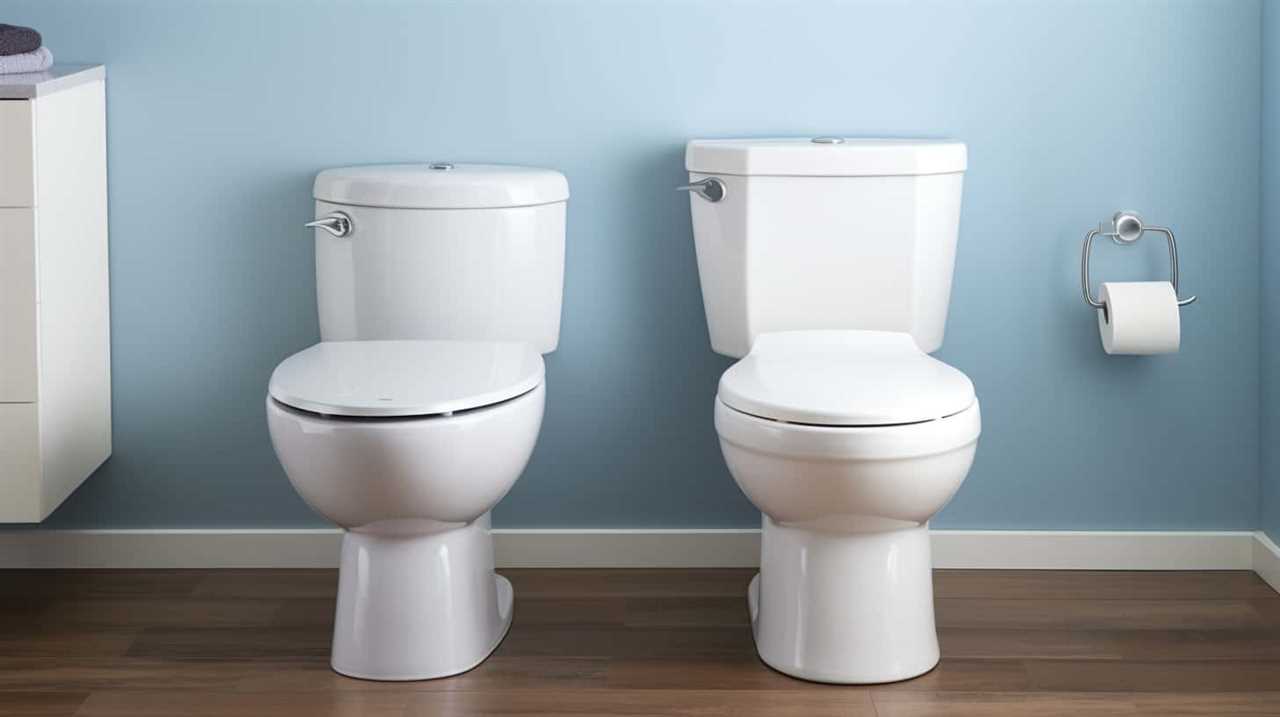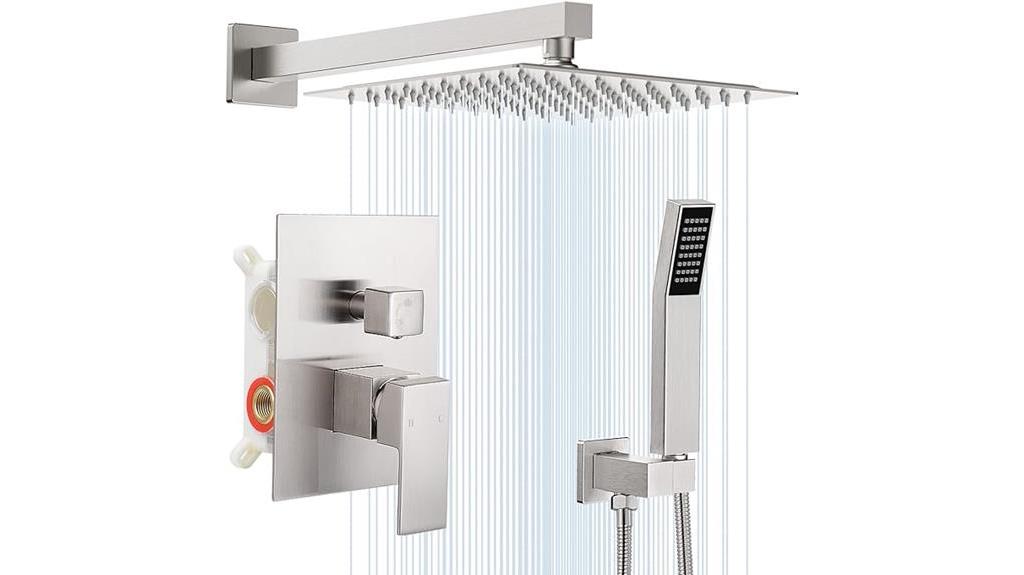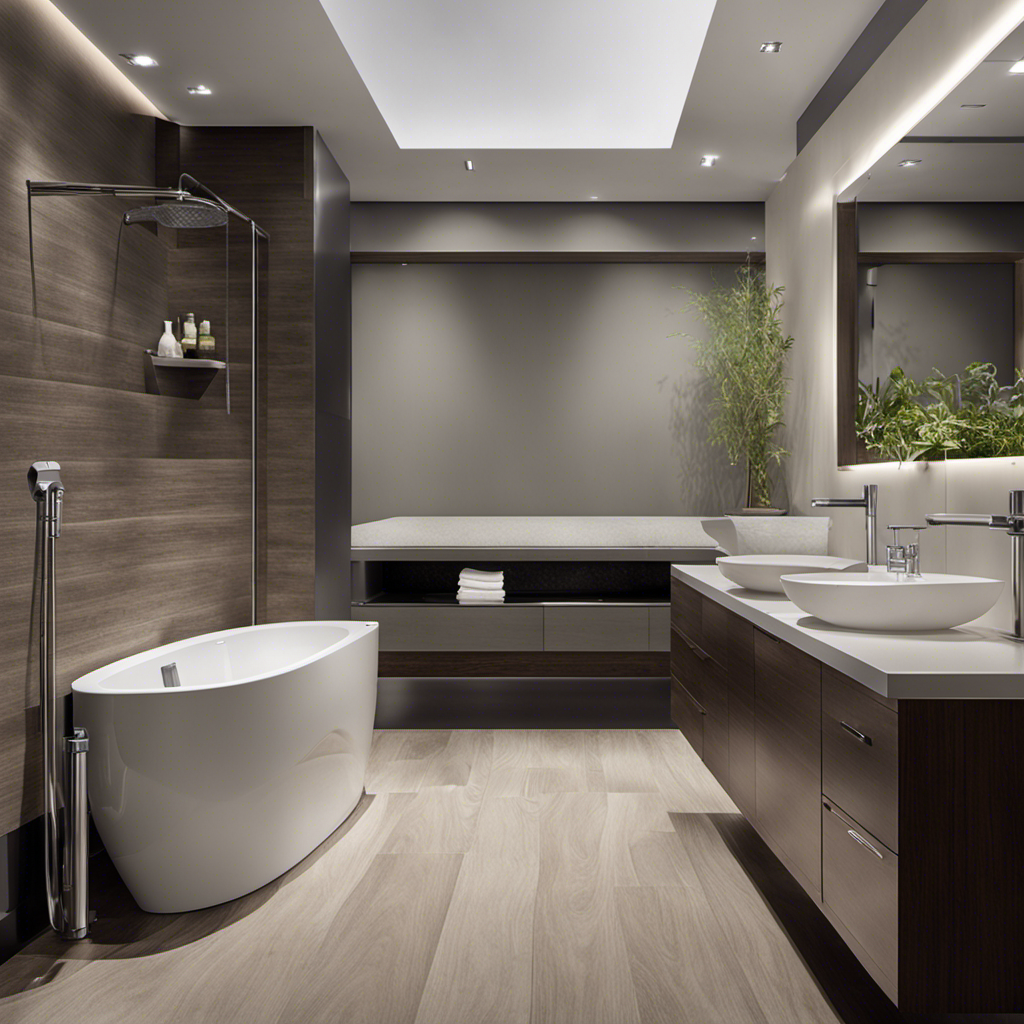Are you tired of dealing with a clogged toilet caused by wipes? Look no further! We’ve got you covered with our step-by-step guide on how to unclog a toilet that has wipes.
Just like skilled plumbers, we’ll walk you through the process using simple tools and techniques. Whether you’re a DIY enthusiast or a homeowner seeking mastery, our expert tips will have your toilet running smoothly again in no time.
Say goodbye to clogs and hello to a hassle-free bathroom experience!
Key Takeaways
- The tools and supplies needed to unclog a toilet that has wipes include a plunger, bucket, rubber gloves, plumbing snake, and disinfectant spray.
- Before starting the unclogging process, it is important to turn off the water supply by locating and turning the shut-off valve clockwise.
- To assess the severity of the clog, look for signs such as water backup in the toilet bowl, slow or no draining, gurgling sounds, foul odors, and previous clogs or flushing issues.
- Using a plunger or a toilet auger can help dislodge the clog. Proper technique and multiple attempts may be required for successful unclogging.
Gather Necessary Tools and Supplies
We gather the necessary tools and supplies to effectively unclog a toilet that has wipes.

To prevent toilet clogs in the first place, it’s important to follow a few simple steps. Firstly, avoid flushing anything other than toilet paper and human waste. Secondly, educate household members about the proper disposal of wipes, emphasizing that they should never be flushed down the toilet.
Now, let’s focus on the tools and supplies needed for the unclogging process. You’ll need a plunger, a bucket, rubber gloves, and a plumbing snake. The plunger will help create suction and dislodge the clog, while the bucket will catch any excess water. Rubber gloves are crucial for hygiene purposes, and the plumbing snake will be used to break up and remove the clog.
With these tools and supplies ready, we’re now prepared to move on to the next step: turning off the toilet’s water supply.
Turn off the Toilet’s Water Supply
To ensure a safe and effective unclogging process, it’s essential to shut off the water supply to the toilet. By turning off the toilet’s water supply, you can avoid any accidental flooding or further damage. Regular maintenance is crucial for toilet plumbing systems to prevent clogs and other issues. Here are some tips for troubleshooting common toilet water supply issues:

- Locate the shut-off valve: This valve is usually located on the wall behind the toilet or near the floor. Turn it clockwise to shut off the water supply.
- Test the shut-off valve: Once it’s closed, flush the toilet to check if the water stops filling the tank. If it continues to fill, you may need to replace the shut-off valve.
Assess the Severity of the Clog
After turning off the toilet’s water supply, it’s important to assess the severity of the clog by examining the signs of water backup or slow drainage. This will help determine the best course of action to take.
Here are some key points to consider when assessing the severity of the clog:
- Look for signs of water backup in the toilet bowl, such as rising water levels or overflow.
- Check if the water is draining slowly or not draining at all.
- Listen for gurgling sounds coming from the toilet or nearby drains.
- Notice any foul odors coming from the toilet or bathroom area.
- Take note of any previous clogs or issues with flushing.
Assessing the severity of the clog will allow you to understand the potential causes and help you take the necessary steps to resolve it.
Additionally, it’s important to learn some tips for preventing future clogs, such as avoiding flushing wipes, sanitary products, or excessive toilet paper. By being proactive and mindful of what goes down the toilet, you can minimize the risk of clogs in the future.

Now, let’s move on to the next step: using a plunger to try and dislodge the clog.
Use a Plunger to Try and Dislodge the Clog
To dislodge the clog, grab a plunger and position it over the drain of the toilet. Using a plunger is a common and effective method to clear clogs caused by flushed wipes. Before starting, it’s important to note that proper disposal methods for toilet wipes should always be followed. Flushing wipes down the toilet can lead to potential damage to the plumbing system, as they aren’t designed to break down like toilet paper.
To use the plunger, make sure there’s enough water to cover the rubber cup of the plunger. Push down firmly and then pull up quickly, creating a suction effect. Repeat this motion several times until the clog is dislodged.
If the plunger doesn’t work, try using a toilet auger, which we’ll discuss in the next section.

If the Plunger Doesn’t Work, Try Using a Toilet Auger
If the plunger doesn’t work, we can try using a toilet auger. A toilet auger, also known as a plumbing snake, is a tool specifically designed to clear clogs in toilets.
Here’s how to use it effectively:
- Insert the auger into the toilet bowl, keeping the handle straight and the coiled wire end facing down.
- Slowly turn the handle clockwise while applying gentle pressure. This will help the auger navigate through the trapway and break up the clog.
- Continue turning the handle until you feel resistance or the clog starts to loosen.
- Once the clog is dislodged, carefully retract the auger, being cautious not to scratch the porcelain.
- Finally, flush the toilet to check if the clog is completely cleared.
If the toilet auger doesn’t work, you may consider alternative methods such as using a plunger with more force or calling a professional plumber. To prevent future clogs, it’s essential to avoid flushing non-flushable items down the toilet and ensure regular maintenance of your plumbing system.
Frequently Asked Questions
How Long Does It Usually Take to Unclog a Toilet Using a Plunger?
Using a plunger to unclog a toilet usually takes a few minutes. However, it’s important to use the right technique to avoid damaging the toilet or pipes. Follow these steps for effective and safe unclogging.

Can Using a Plunger Damage the Toilet or Pipes?
Using a plunger can potentially damage the toilet or pipes if excessive force is applied. It is not recommended to use chemicals or drain cleaners as they can corrode the pipes and cause further damage.
Are There Any Alternative Methods to Unclog a Toilet Without Using a Plunger or Toilet Auger?
There are alternative methods to unclog toilet clogs without using a plunger or toilet auger. These methods can effectively remove blockages and restore proper flushing.
What Should I Do if the Water Supply Valve Is Difficult to Locate or Doesn’t Turn off Properly?
If the water supply valve is difficult to locate or doesn’t turn off properly, we recommend consulting a professional plumber. They have the expertise and tools to handle this situation safely and effectively.
Is It Safe to Use Chemicals or Drain Cleaners to Unclog a Toilet?
Using chemicals to unclog a toilet can be dangerous. We once had a case where the drain cleaner caused a chemical reaction, releasing toxic fumes. It’s best to avoid using them and opt for safer methods like using a plunger or a toilet auger.

Conclusion
In conclusion, unclogging a toilet that has wipes can be a straightforward process with the right tools and steps.
By assessing the severity of the clog and using a plunger or toilet auger, you can effectively dislodge the blockage and restore your toilet’s functionality.
Remember to turn off the water supply before starting the unclogging process.
With a little bit of effort and the right approach, you can successfully tackle this common household issue.











